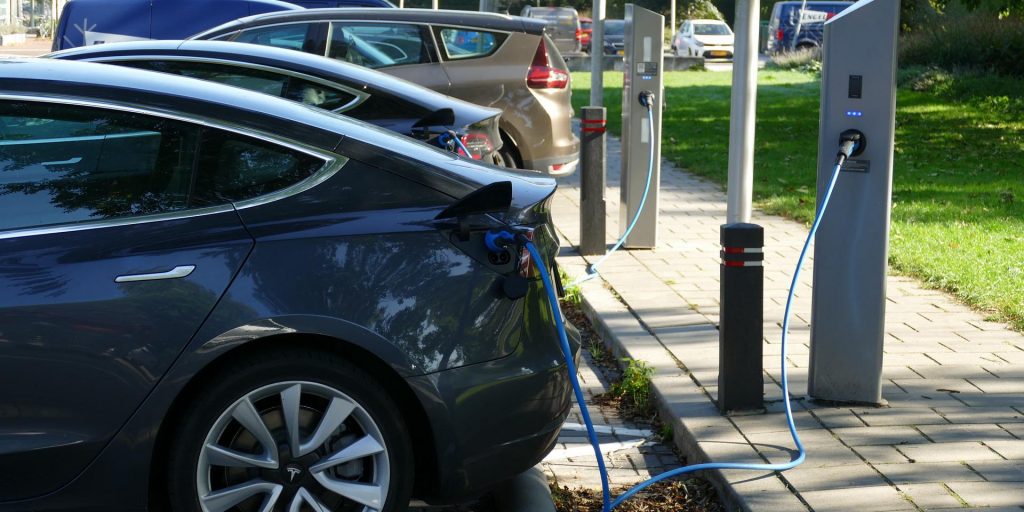The role of EV infrastructure in municipal mobility planning
The movement toward electric vehicles (EV) is accelerating, being fueled by evolving consumer preferences, generous incentives from the federal government, and bold commitments from automakers that collectively aim to curb our nation’s carbon emissions over the next decade and beyond. Electric vehicle sales in the United States have revved up by more than 40 percent each year, on average, since 2016, and according to an eye-opening report recently released by McKinsey & Company, America will require some 1.2 million public EV chargers and 28 million private EV chargers by 2030. Fortunately, the Bipartisan Infrastructure Law recently passed by Congress and enacted by President Biden targets $7.5 billion for building 500,000 EV charging stations nationwide, and forward-thinking planners at the city and county level must act fast to develop EV charging optimization plans and secure supplemental investments through public private partnerships (P3s) to bring this critical infrastructure to our communities.
Creating a roadmap for success
An EV charging optimization plan is, essentially, a roadmap to help municipalities and stakeholders navigate the extremely complex nature of EV technology and bring a range of environmental benefits and new revenue streams to the community. Appreciating that grants from the federal government to establish and fortify EV infrastructure won’t last forever, municipal leaders should quickly develop EV charging optimization plans and submit applications for funding that can cover most—and, in some cases, all—of the upfront investments.
When creating an EV charger optimization plan, it is important to incorporate supply-and-demand by analyzing meta data on traffic volume, registered EVs and other external factors. This will provide the insights necessary to complete a spatial analysis of potential charging sites to ensure optimal accessibility. In terms of siting, municipalities generally benefit from possessing a trove of prime real estate for on-street and off-street EV charging stations amid public sidewalks and other high-traffic areas in commercial districts. Local governments have also been strongly encouraged to focus on maximizing EV usage and promoting equity among people with a diverse range of incomes and backgrounds.
Here are some other factors to consider when planning public EV charging facilities in high-density areas:
- Collaborate with an experienced mobility and electrification partner to ensure you have a sound plan in place that meets the projected demand over the next five to 10 years.
- Expand charging networks beyond the urban core, into other urban neighborhoods and suburbs easily accessible to all.
- Install more chargers at existing charging stations, which is more economical than building new stations.
Leveraging public private partnerships (P3s)
Public private partnerships are also a worthy pursuit to realizing EV solutions at the municipal level, as private sector entities are often willing to subsidize projects and provide vital infrastructure in exchange for a minimum-term operating agreement. This agreement can drastically minimize upfront capital expenses and provide municipalities with long-term, steady revenue sources.
For example, Georgia recently unveiled a plan to boost its state EV charging infrastructure through P3s, whereby the state would not own, operate or maintain the EV charging locations. Private partners will be found through a competitive solicitation process, according to state officials. In neighboring Florida, the state passed legislation to allow for public-private partnerships relative to EVs, and Colorado released an EV deployment and infrastructure plan to create a sense of certainty and commitment that invites widespread investment from the private sector.
Private sector operators also can provide insight into the optimal fee structure, charger visibility, and advertising best practices to increase usage among drivers and create an appealing profit structure for local governments. Local governments, in turn, can support the private sector by streamlining permitting processes, augmenting existing charger networks, and creating policy that further incentivizes EV development.
EV demand has been established beyond a doubt, and now is the time for municipalities to take advantage of the resources and opportunities that have been made available to flood the market with supportive EV charging infrastructure. As we saw with pandemic-inspired bailout grants for struggling businesses and households, the government assistance programs were robust but eventually ran out of money. Taking stock of those lessons learned, it is incumbent upon municipalities to act quickly in the aftermath of the Bipartisan Infrastructure Law—in collaboration with varying levels of the public and private sectors—and become early adopters of sustainable technology that will benefit communities for years to come.
David Schmid is the chief investment officer of Propark Mobility, a Hartford, Conn.-based national mobility and parking management company with more than 750 locations in more than 100 cities. Schmid leads mergers and acquisitions, the real estate division and Propark’s Cloudpark Technology Initiative.
Luis Garcia is the senior vice president of mobility at Propark, where he oversees overall strategy, development, planning and implementation of Propark’s mobility offerings and partnerships. For more information, visit Propark.com.




















